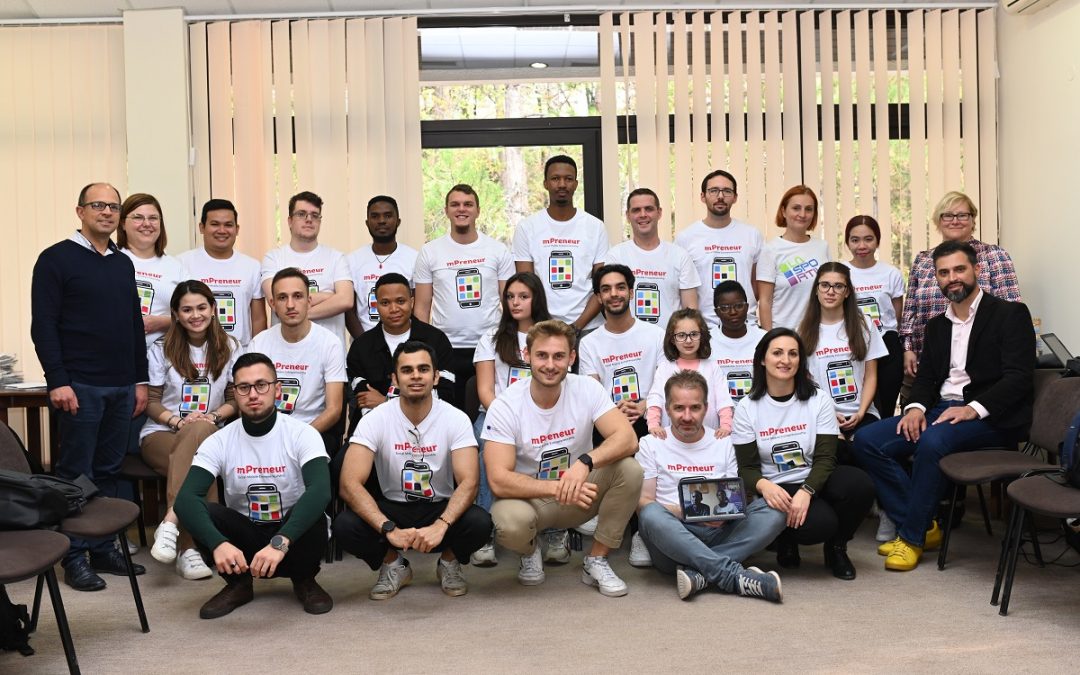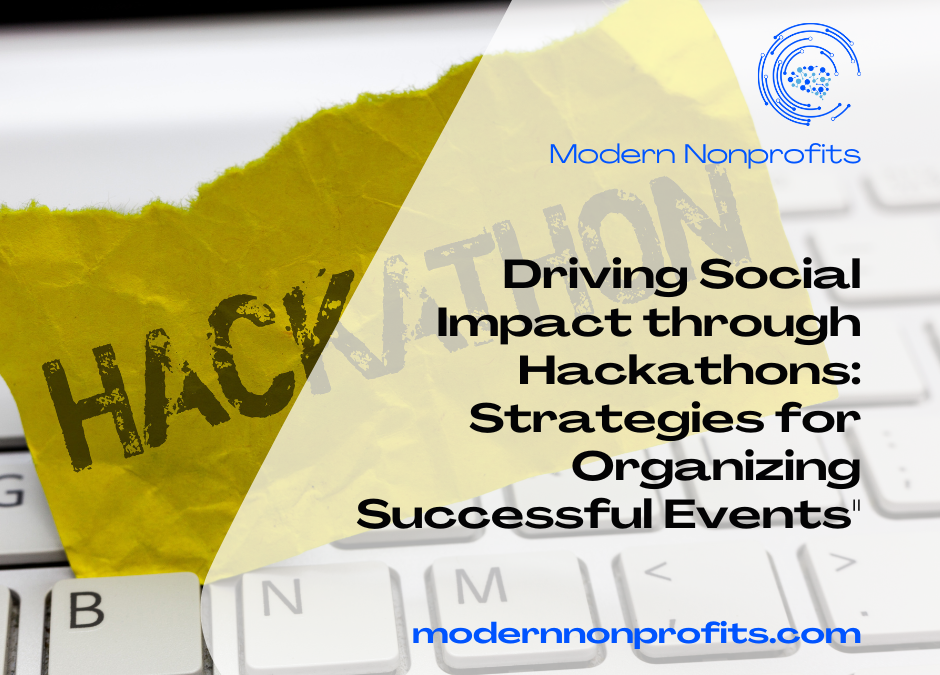Hackathons have become a popular tool for innovation and problem-solving, and their potential to drive social impact is increasingly recognized. Hackathons for social impact bring together people with diverse backgrounds and expertise to collaboratively create solutions for social challenges. From creating innovative software applications to developing new products, hackathons have the potential to make a meaningful impact on society. In this article, we will explore why hackathons are an effective way to leverage social impact and how to organize a successful hackathon that drives meaningful change.
In recent years, hackathons have gained popularity as a platform for innovation and problem-solving. Hackathons are essentially events where teams of people come together to collaboratively create software programs, applications, or websites, often with a specific goal or objective in mind. While hackathons have traditionally been associated with the tech industry, they can also be used as a tool for social impact.

Hackathons for social impact are events that bring together people with diverse backgrounds and expertise to collaborate and create solutions for social challenges. They can be organized by governments, non-profits, corporations, or other organizations that are interested in leveraging technology for social good. In this article, we will explore why hackathons are an effective way to drive social impact and how to organize a successful hackathon.
Why Organize a Hackathon for Social Impact?
Hackathons offer several benefits for social impact organizations. Here are some of the most important reasons to organize a hackathon:

- Innovative solutions: Hackathons bring together diverse groups of people with different skill sets, experiences, and perspectives. This allows for a variety of innovative solutions to be generated, which can help address social challenges in new and creative ways.
- Collaboration: Hackathons encourage collaboration and teamwork. Participants work together to build prototypes and test their ideas, which can lead to more effective solutions and a better understanding of the social challenge at hand.
- Speed: Hackathons are usually time-limited events, often spanning a weekend. This time constraint can motivate participants to work quickly and efficiently to come up with viable solutions.
- Engagement: Hackathons are an engaging way to involve a community in solving social problems. Participants are often passionate about the issues they are working on and are motivated to create real change.
- Learning: Hackathons provide an opportunity for participants to learn new skills and gain valuable experience. This can lead to personal and professional growth, as well as increased interest in social impact and technology.

How to Organize a Hackathon for Social Impact?
Organizing a hackathon for social impact requires careful planning and execution. Here are the key steps to follow:
- Define the problem: Identify a social challenge that your organization wants to address. The problem should be specific, measurable, and have a clear impact on society.
- Gather a team: Assemble a team of organizers who are passionate about the social challenge and have experience with hackathons or event planning.
- Set the date and location: Choose a date and location for the hackathon that is accessible to participants and provides a conducive environment for creativity and collaboration.
- Recruit participants: Reach out to the tech community, universities, and local organizations to recruit a diverse group of participants. Consider offering prizes or other incentives to attract more people.
- Provide resources: Ensure that participants have access to the tools and resources they need to create their solutions, such as hardware, software, and data.
- Set guidelines: Establish guidelines and rules for the hackathon, including judging criteria, team size, and time limits.
- Mentorship and support: Offer mentorship and support to participants throughout the hackathon. This can include technical assistance, design feedback, and guidance on how to develop effective social impact solutions.
- Judging and awards: At the end of the hackathon, judges should evaluate the solutions based on the established criteria and award prizes to the winning teams.
- Follow-up and implementation: After the hackathon, work with the winning teams to implement their solutions and monitor their impact. This can help ensure that the event has a lasting social impact.

Successful Hackathon Events Organized In Europe
There have been many successful hackathons organized in Europe in recent years. Here are some examples:
- The Global Hack: In 2020, The Global Hack was a series of virtual hackathons held in response to the COVID-19 pandemic. The event brought together participants from around the world to develop innovative solutions to the crisis. The Global Hack was organized in several European countries, including Estonia, Finland, and Lithuania.
- Climathon: Climathon is a global hackathon focused on climate change. The event is organized by Climate-KIC, a European climate innovation initiative. Climathon events have been held in cities across Europe, including Berlin, Barcelona, and Rome.
- HackZurich: HackZurich is Europe’s largest hackathon and one of the largest in the world. The event is held annually in Zurich, Switzerland, and brings together more than 550 participants from around the world. HackZurich is focused on innovation in a wide range of fields, including artificial intelligence, blockchain, and sustainability.
- HackJunction: HackJunction is a hackathon held annually in Helsinki, Finland. The event brings together over 1,000 participants from around the world to work on solutions to a variety of social and environmental challenges. Junction has gained a reputation as one of Europe’s leading hackathons, with a focus on creativity, collaboration, and innovation.
- Hack4Climate: Hack4Climate is a hackathon focused on developing solutions to climate change. The event is organized by the United Nations Framework Convention on Climate Change and has been held in several European cities, including Bonn, Germany, and Katowice, Poland.
- mPreneuer: mPreneur Social Mobile Entrepreneurship stimulates capacity building of young aspiring entrepreneurs and youth CSOs for the usage of apps coding and ICT as vital skills for youth employability as well as for strengthening community resilience. Young innovators develop sustainable innovative business mobile solutions to the persisting community challenges.

These hackathons are just a few examples of the many successful events that have been organized in Europe in recent years. They demonstrate the power of hackathons to bring together people from diverse backgrounds and drive innovation for social and environmental challenges.
Conclusion
Hackathons for social impact are a valuable tool for addressing social challenges in innovative and collaborative ways. By bringing together diverse groups of people, hackathons can offer a unique opportunity to engage communities, generate new ideas, and develop solutions that have the potential to create real change. To ensure the success of a hackathon for social impact, it is important to carefully plan and execute the event, recruit a diverse group of participants, and provide them with the resources and support they need to create effective solutions.
In addition to the benefits outlined above, hackathons for social impact can also help to build relationships and networks among participants, organizations, and communities. These relationships can lead to further collaboration and innovation in the future, creating a lasting impact on social challenges.
Overall, hackathons for social impact are a powerful tool for organizations looking to leverage technology and innovation to create positive change. By organizing and supporting these events, we can bring together passionate individuals and create solutions that have the potential to make a real difference in the world.
Further reading recommendations:
 The Hackathon Survival Guide: Make your hack stand out from the crowd! by Samuel Larsen-Disney
The Hackathon Survival Guide: Make your hack stand out from the crowd! by Samuel Larsen-Disney
“The Hackathon Survival Guide: Make your hack stand out from the crowd!” by Samuel Larsen-Disney is an excellent resource for anyone interested in participating in a hackathon. The book is filled with practical advice and tips for preparing and executing a successful hackathon project, from brainstorming ideas to presenting the final product. The author’s engaging writing style and real-world examples make the book an enjoyable and informative read. Whether you are a seasoned hackathon participant or a newcomer, this book is a valuable resource that can help you maximize your potential and increase your chances of success in any hackathon event.



Wow, it’s really cool to see how hackathons are being used as a tool for social impact! It’s amazing to think about the potential of bringing together diverse groups of people to create innovative solutions for important social issues. I agree that careful planning and execution is essential to ensure the success of these events. With the right resources and support, hackathons can really make a difference in creating real change. But…I’m sure as good as it sounds it’s important to be aware of the potential downsides, such as burnout and stress for participants, and the risk of solutions that lack sustainability or scalability.
When you merge the unmergable, it can always lead to outstanding innovations. Merging tech and social impact for sure can lead to significant digital social change. Recently I organized the mPreneur hackathon, listed in the post, where people from tech were introduced in the sustainability and social impact, and it was game changing for them. When you add the social component into your business, you have the right match.
This post on hackathons and their potential for driving meaningful social change is very insightful. Your discussion of the benefits of hackathons for social impact, such as fostering collaboration and innovation, was both informative and thought-provoking. I appreciated your detailed explanation of how to organize a successful hackathon, including tips on selecting a theme, recruiting participants, and setting goals for the event. Your insights into how to create a positive and inclusive environment for participants were also valuable and important for promoting diversity and social impact. Overall, your post was engaging and easy to read, and provided a wealth of useful information for anyone interested in organizing a successful hackathon. Thank you for sharing your expertise on this important topic, and for inspiring others to use hackathons as a tool for driving positive social change.
Dear Eric, thank you for your insightful comment. I am happy to reach out to people who are interested in topics related to social impact. I am looking forward to seeing you as a participant in some of the hackathons I organize. I invite you to follow my writings cause many more similar topics are coming.
This post on hackathons and their potential for driving meaningful social change is very insightful. Your discussion of the benefits of hackathons for social impact, such as fostering collaboration and innovation, was both informative and thought-provoking. I appreciated your detailed explanation of how to organize a successful hackathon, including tips on selecting a theme, recruiting participants, and setting goals for the event. Your insights into how to create a positive and inclusive environment for participants were also valuable and important for promoting diversity and social impact. Overall, your post was engaging and easy to read, and provided a wealth of useful information for anyone interested in organizing a successful hackathon. Thank you for sharing your expertise on this important topic, and for inspiring others to use hackathons as a tool for driving positive social change.